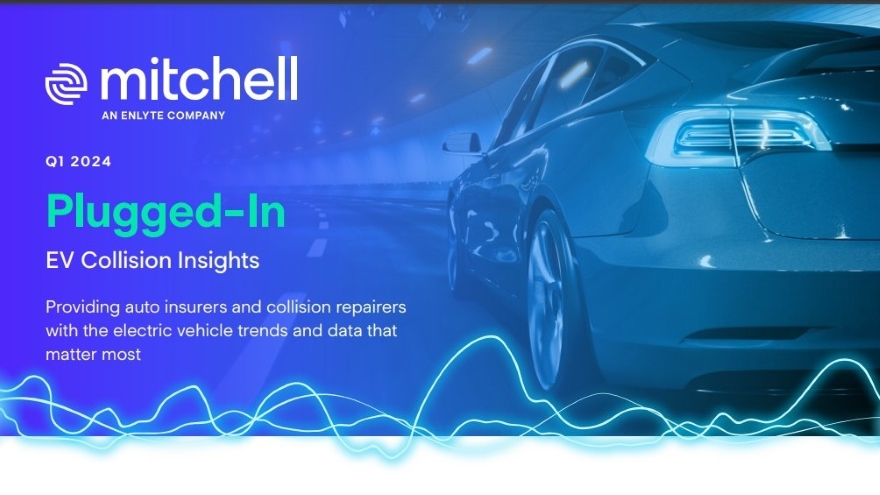EV total loss claims soar as prices fall

Image courtesy of Mitchell International.
As electric vehicle prices fall, total loss claims rise.
That’s the key finding of the latest report from Mitchell, a technology and information provider for the property and casualty claims and collision repair industries.
The trends report for the first quarter of 2024, titled “Plugged-In: EV Collision Insights,” found EV total loss rates have soared 8% over the previous quarter and 30% from Q3 2023 in both the U.S. and Canada since late last year — mirroring the recent drop in used EV prices.
Total losses rose to 9.93% in the U.S. and 7.48% in Canada.
Still, the report said, EV total loss frequency remains in line with the rates for 2021 and newer gas-powered vehicles, which ended the quarter at 9.51% in the U.S. and 7.44% in Canada.
“Slowing new sales, manufacturer price reductions and changing consumer sentiment are impacting the value of used EVs,” Mitchell director of claims performance Ryan Mandell said. “As a result, the total loss frequency for collision-damaged EVs is increasing.
“However, it is also increasing for new gasoline-powered vehicles, which are comparable to EVs in terms of their complexity and cost to repair.”
That said, the report also found several differences between claims for EVs and internal combustion engine vehicles in Q1.
Repair labor hours: The average number of mechanical labor hours on estimates for repairable vehicles was nearly twice as high for EVs (3.04) as for vehicles (1.66 hours), which added to EV repair costs.
Claims severity: Average claims severity decreased in Q1, but severity costs were still greater for EVs. In the U.S., the cost for EVs was $6,066 compared to $4,703 for ICEs, a 29% difference. For Canadian vehicles, EVs severity cost was 33% more for EVs: $6,810 versus $5,110.
Claims frequency: EV sales have slowed but claims frequency has been growing steadily, the report found, rising to 2.26% in the U.S. (up 40% from Q4 2023) and 3.41% in Canada (up 38%).
Parts utilization and repair: With no strong inventory of aftermarket and recycled parts, EV collision repairs are more likely to include OEM parts than those for gas cars. More than 89% of EV repairs use OEM parts, compared to 65% for ICEs. In addition, the report said, EV parts tend to be lighter weight to offset the much heavier battery, making them more difficult to repair. As a result, the percentage of EV parts repaired rather than replaced was less than 13% as opposed to almost 15% for gas-powered vehicles.
The full report is available for download here.


